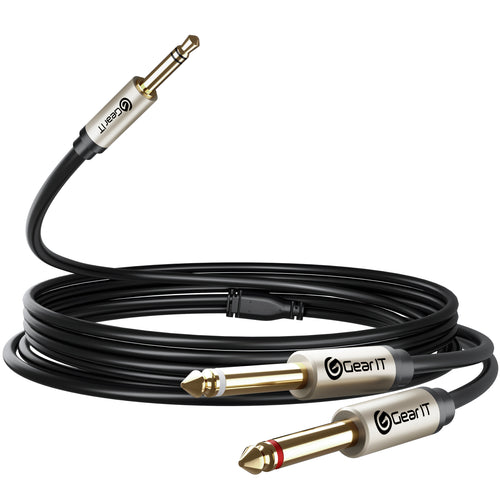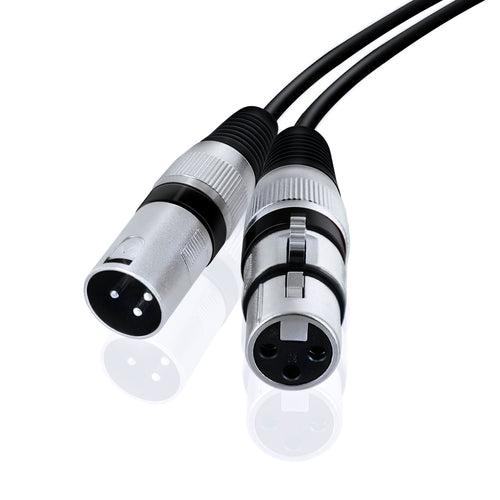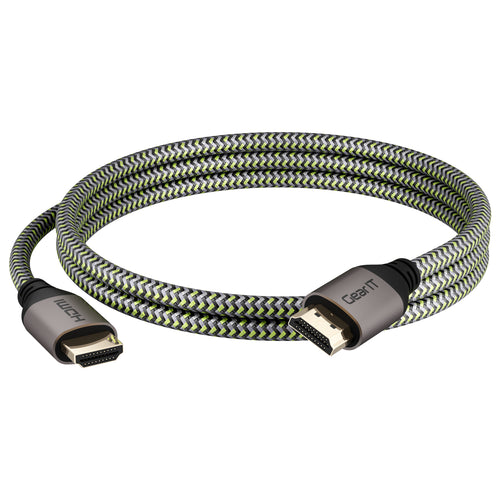Audio cables are an essential element in any speaker setup. They allow for the amplification of music, speakers, and other sounds for events or home applications. The wide variety of cables available, and the technological nature of modern audio and visual equipment, may make them seem daunting, but with a little knowledge you can arrange the ideal audio setup for your space.
Understanding Audio Cables
The first step toward using sound cables for all they're worth is understanding how they work. While different types of cables are built with slightly different functions and with varying technology, they have a lot in common.
Overall Function
Audio cables, as their name suggests, transfer sound data from one device to another. They serve as a conduit for sound waves that are input by a given device in order for those waves to reach the next device, which may be an amplifier, a speaker, or a sound system. Sound cables are used for both simple and complex audio-related applications.
An example of a simple application for sound cabling is earphones. Earphones, which are used by just about everyone, are technically just audio cables (the cord) with built-in portable speakers at the end (the earpieces). Because of their flexible nature and the ability of modern cables to reduce noise in their signal, audio cabling is also used in much more intricate and complex setups in concert halls, houses of worship, classrooms, and many other venues that need sound amplification.
Balanced and Unbalanced Cables
One important aspect of sound cabling is the concept of "balanced" and "unbalanced" cables. The main difference between these is that balanced audio cables are capable of greatly reducing extra signal noise that may be picked up by the cable, thereby cleaning up the sound, whereas unbalanced cables are not equipped with this ability. All cables are either balanced or unbalanced, and it's best to aim for using only balanced cables in your setup if possible.
Note that audio devices can also be balanced or unbalanced, so try to have balanced devices as well as balanced cables. If you do end up with an unbalanced device in your rig, try to keep the cables around it as short as possible to help keep the signal clear.
Different Types of Audio Cables
The many different kinds of audio cabling available on the market reflect the long-term development of sound cabling as well as its many different applications. While there are certain types of cables that have become largely obsolete over the years, many of them continue to be used in specific circumstances, so it's not unusual to run into even the least popular of these every once in a while.
TS and TRS Cables
TS and TRS are some of the most basic types of audio cables offered on the market. They are typically 1/4-inch and 1/8-inch cables and are most commonly used for connecting electric instruments or media players to speakers. TS stands for "tip sleeve" and refers to the unbalanced version of this type of cable. TRS indicates "tip ring sleeve," which is the balanced version of this kind of cable.
Make sure that you match your outputs to the right kind of cable so you don't run into issues. For example, TRS plugs will work with all signals, whether mono or stereo, whereas TS plugs only work with some. Therefore it's often better to lean toward using TRS cables in general. It's also important to remember that TS cables because they are unbalanced, need to be kept as short as possible in a setup to keep extra noise from invading the signal and muddying up the sound.
XLR Cables
XLR sound cables typically carry signals more strongly than TS or TRS audio cables. All XLR cables are balanced to begin with, as evident from their three-pronged ends, and they also tend to be more physically robust. XLR cables are the standard for running microphones in particular. They are also the default cable used in snakes and sub-snakes when connecting an entire sound system together.
Many audio devices will have inputs and outputs set up for either using 1/4-inch or XLR cables, leaving you the choice of what type of cabling to use. Because of the secure and quality signal they offer when compared to many 1/4-inch cables, it's typically best to opt for XLR cables whenever possible. They're indispensable for most professional audio setups.
Speaker Wire
Speaker wire are vital audio cables for connecting amplifiers to speakers. This wire is often sold in large spools and with the ends unfinished. One of the most prominent uses of speaker wire is connecting AV receivers to surround sound speakers. For example, a 5.1 speaker setup means that there are 5 speakers (center, front left, front right, back left, and back right) and one subwoofer that can be connected by speaker wire to an AV receiver that is in turn connected to the TV.
Other Cabling
There are many other cables used for audio as well, though they are typically not as strong or are used for very specific situations. RCA cables are an older type of cabling that is unbalanced, so they are best for running audio shorter distances. USB cables can also be used to transfer audio as well as computer data, and they are especially appropriate for keyboard and other digital instrument setups. Finally, HDMI cables are capable of transferring audio as well as video and as a result can be a useful way to send audio from a sound device to a TV or monitor, removing the need to run audio and video cables separately.



























































